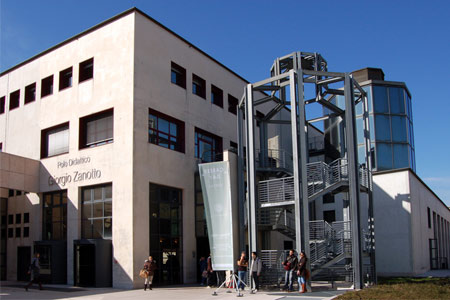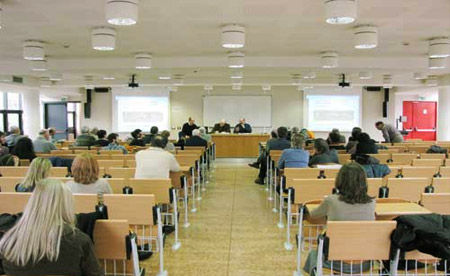To show the organization of the course that includes this module, follow this link  Course organization
Course organization
Learning outcomes
The course aims at providing students with the analysis of variation within Germanic languages focusing on the Cimbrian varieties spoken both in the Veneto and Trentino Regions. The course will delve into historical documents (starting from the 17th Century) and recent grammatical descriptions with particular reference to syntactic analysis.
As regards Cimbrian written tradition, the course will concentrate on the two different translations of the Catechism (the first one published in 1602 and the second one in 1813) and the newly published anthology of Cimbrian short stories, collected in 1941 by Bruno Schweizer.
Particular attention will be devoted to the syntax of pronouns and verbs both from a descriptive and a formal perspective.
References:
[1] Tomaselli A., Il cimbro come laboratorio d'analisi per la variazione linguistica in diacronia e sincronia. In: Variis Linguis, Studi offerti ad Elio Mosele in occasione del suo settantesimo compleanno.
[2] Bosco I., “Christlike unt korze Dottrina”: un’analisi sintattica della lingua cimbra del XVI secolo, in Tesi di Linguistica tedesca di E.M. Thüne-A. Tomaselli, Unipress 1999
[3] E. Bidese, Das Zimbrische von Giazza: Zeugnisse und Quellen aus einer deutschen Sprachinsel in Oberitalien. Übersetzungen, Hörbeispiele und Bildmaterial zu den von Bruno Schweizer gesammelten Erzählungen / Il Cimbro di Giazza: testimonianze e fonti da un'isola linguistica tedesca in Norditalia. I racconti di Bruno Schweizer con traduzioni, esempi sonori e materiali visivi, Innsbruck: Studien Verlag, 2011 (racconti scelti)
[4] Cappelletti, G. e Schwezer B. Tautsch. Puox tze lirnan, reidan un scraiban iz Gareida on Lietzan, Taucias Gareida edizioni, 1980 [1942]
[5] L. Panieri, “La filologia germanica” in Il cimbro negli studi di linguistica a cura di E. Bidese, Unipress 2010.
Further references:
[6] C. Poletto e A. Tomaselli, “L’interazione tra germanico e romanzo in due “isole linguistiche”: cimbro e ladino centrale a confronto” in Isole linguistiche? a cura di G. Marcato, Unipress, 2000
[7] C. Poletto e A. Tomaselli, “Le frasi interrogative in sappadino e altre varietà germaniche conservative” in I dialetti e la montagna a cura di G. Marcato, Unipress 2004
[8] P. Benincà, “L’interferenza sintattica: di un aspetto della sintassi ladina considerato di origine tedesca” in La variazione sintattica di P. Benincà, Il Mulino, 1994
[9] Bayer, J. (1984b), “COMP in Bavarian syntax”. The Linguistic Review 3. 209-274.
[10] Bayer, J. & E. Brandner (2008b), “Wie oberflächlich ist die syntaktische Variation zwischen Dialekten? - Doubly-filled COMP revisited”. In: F. Patocka & G. Seiler (eds.) Dialektale Morphologie, dialektale Syntax. Vienna: Praesens.
[11] Abraham, W. & J. Bayer (eds.) (1993), Dialektsyntax. Sonderheft 5 der Linguistischen Berichte, Westdeutscher Verlag.








